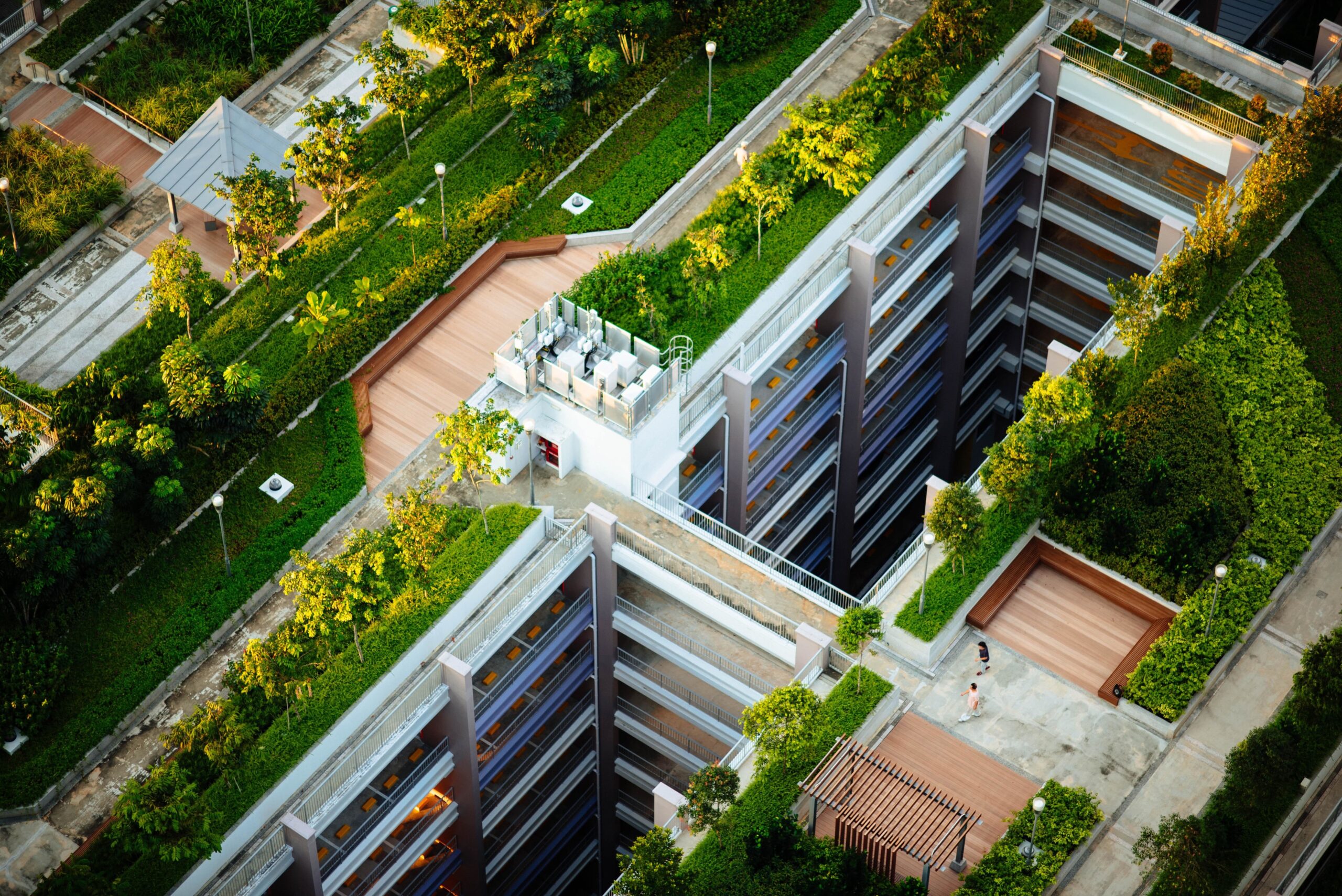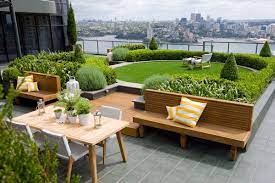What is Rooftop gardens ?
A rooftop garden, also known as a green roof or rooftop greenery, is a garden that is cultivated on the roof of a building, whether it’s a residential, commercial, or industrial structure. These gardens are designed and built to grow various plants, including grasses, shrubs, flowers, and even trees, on the rooftop surface. Here are some key features and aspects of rooftop gardens:
- Vegetation: Rooftop gardens can vary in terms of the types of plants they support. Some may consist of simple grasses or low-maintenance succulents, while others can accommodate more diverse and complex ecosystems with a variety of plant species.
- Purpose: Rooftop gardens serve multiple purposes, which can include enhancing the aesthetics of the building, providing green spaces in urban environments, improving energy efficiency, managing stormwater, promoting biodiversity, and even producing food in some cases.
- Environmental Benefits: They offer several environmental benefits, such as reducing the urban heat island effect, improving air quality by filtering pollutants, and reducing energy consumption by providing insulation and temperature regulation for the building below.
- Stormwater Management: Rooftop gardens absorb rainwater, reducing runoff and helping to manage stormwater in urban areas. This can be particularly useful in preventing flooding and mitigating the strain on local drainage systems.
- Energy Efficiency: Green roofs can provide natural insulation, reducing the need for heating in the winter and cooling in the summer, thereby lowering energy costs for the building.
- Biodiversity: Rooftop gardens can support local wildlife, such as insects and birds, by providing habitat and food sources. Properly designed green roofs can contribute to urban biodiversity.
- Aesthetic and Recreational Value: Many rooftop gardens are designed with aesthetics and recreational use in mind. They may include seating areas, walking paths, and even amenities like rooftop bars or lounges.
- Community Spaces: Rooftop gardens can serve as communal areas for building residents or employees, fostering a sense of community and providing a space for relaxation and socialization.
- Structural Considerations: Building a rooftop garden requires careful consideration of the building’s structure and load-bearing capacity. The roof must be able to support the additional weight of the soil, plants, and any associated infrastructure.
- Maintenance: Rooftop gardens require regular maintenance, including watering, weeding, and pruning. Proper irrigation systems are essential to ensure that plants receive the necessary moisture.
Rooftop gardens have become increasingly popular in urban areas worldwide as a way to make the most of limited urban space, promote sustainability, and improve the quality of life for urban residents. They can be found on a wide range of buildings, from small residential homes to large commercial skyscrapers, and their design can vary from simple and functional to elaborate and luxurious.
Rooftop gardens in China
Rooftop gardens in China, like in many other parts of the world, have gained popularity in recent years due to several environmental, social, and economic benefits they offer. These gardens can be found in various cities across China, and they serve multiple purposes, from improving urban air quality to providing green spaces for recreation and relaxation. Here are some key points about rooftop gardens in China:
- Urban Greening: Rooftop gardens contribute to urban greening efforts in densely populated Chinese cities. They help mitigate the heat island effect, reduce air pollution, and enhance the overall urban environment.
- Agricultural Production: Some rooftop gardens in China are used for small-scale agriculture, where residents grow vegetables and herbs. This practice promotes urban farming and can help increase local food production.
- Stormwater Management: Rooftop gardens can also absorb rainwater, reducing the burden on stormwater drainage systems and preventing flooding in urban areas.
- Energy Efficiency: Green roofs can provide natural insulation, helping to regulate indoor temperatures and reduce energy consumption for heating and cooling in buildings. This can be especially important in regions with extreme weather conditions.
- Biodiversity: Rooftop gardens can support biodiversity by providing habitats for birds, insects, and other small animals. Planting a variety of native species can encourage local wildlife.
- Aesthetic and Recreational Value: Many rooftop gardens are designed to be aesthetically pleasing and offer recreational spaces for residents. They can include walking paths, seating areas, and even playgrounds.
- Community Spaces: Rooftop gardens can also serve as community gathering spaces, bringing residents together and promoting social interaction.
- Commercial and Residential Buildings: Rooftop gardens can be found on both commercial and residential buildings in China. Some luxury hotels and high-end residential complexes feature elaborate rooftop gardens as a selling point.
- Government Initiatives: Chinese government authorities, at various levels, have been promoting green building practices, including the development of rooftop gardens, as part of broader sustainability and environmental initiatives.
- Challenges: Despite their benefits, rooftop gardens can face challenges in terms of maintenance, structural considerations, and initial costs. Ensuring proper waterproofing, irrigation, and plant care is essential for their success.
- Research and Innovation: China’s interest in sustainable urban development has driven research and innovation in rooftop garden technology and design. Architects and engineers are constantly working on new ways to make rooftop gardens more efficient and environmentally friendly.
Rooftop gardens are just one aspect of China’s efforts to create more sustainable and livable cities. They align with the broader goals of reducing pollution, enhancing green spaces, and improving the quality of life for urban residents in China.




